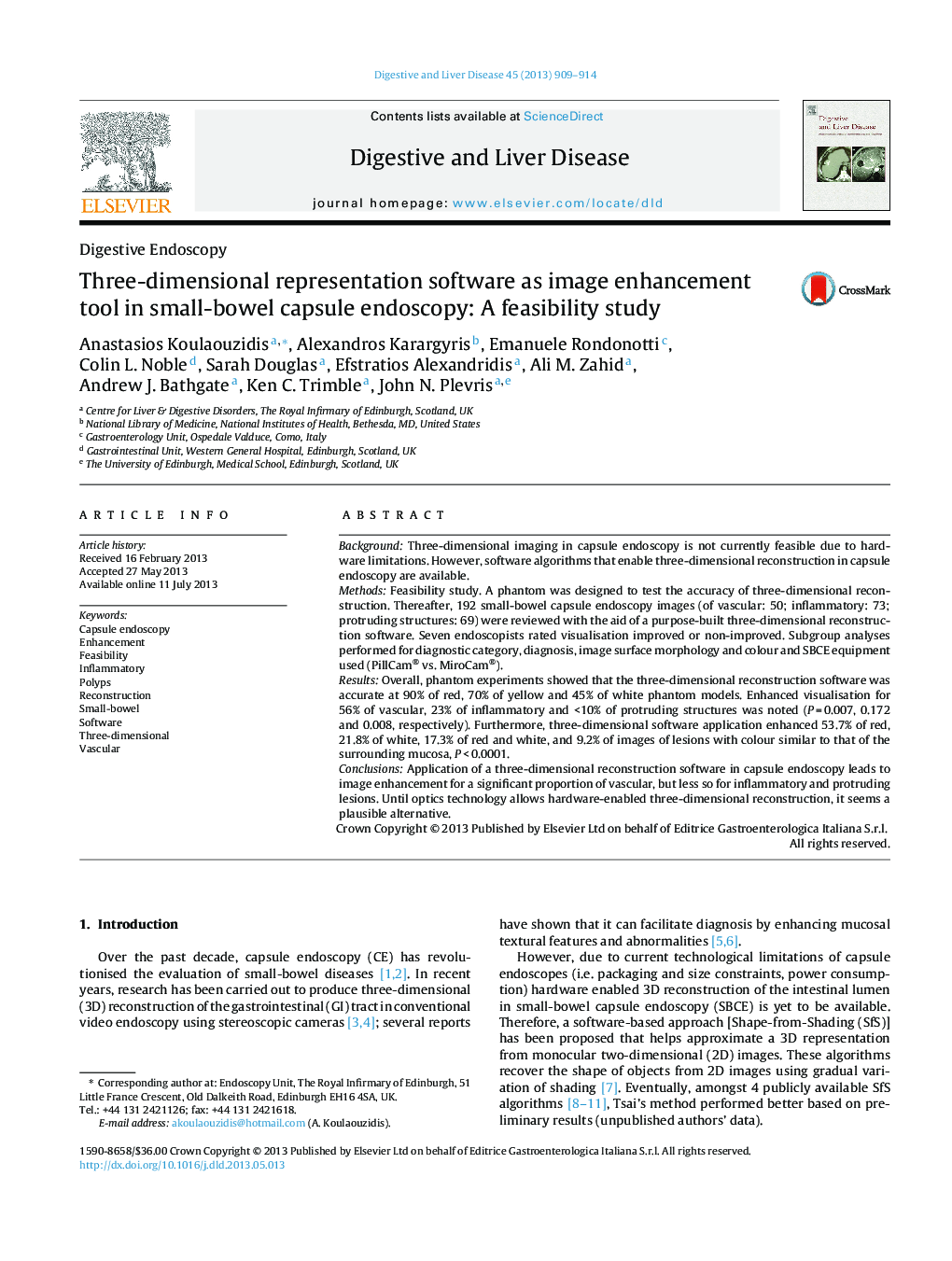| Article ID | Journal | Published Year | Pages | File Type |
|---|---|---|---|---|
| 6088674 | Digestive and Liver Disease | 2013 | 6 Pages |
BackgroundThree-dimensional imaging in capsule endoscopy is not currently feasible due to hardware limitations. However, software algorithms that enable three-dimensional reconstruction in capsule endoscopy are available.MethodsFeasibility study. A phantom was designed to test the accuracy of three-dimensional reconstruction. Thereafter, 192 small-bowel capsule endoscopy images (of vascular: 50; inflammatory: 73; protruding structures: 69) were reviewed with the aid of a purpose-built three-dimensional reconstruction software. Seven endoscopists rated visualisation improved or non-improved. Subgroup analyses performed for diagnostic category, diagnosis, image surface morphology and colour and SBCE equipment used (PillCam® vs. MiroCam®).ResultsOverall, phantom experiments showed that the three-dimensional reconstruction software was accurate at 90% of red, 70% of yellow and 45% of white phantom models. Enhanced visualisation for 56% of vascular, 23% of inflammatory and <10% of protruding structures was noted (PÂ =Â 0.007, 0.172 and 0.008, respectively). Furthermore, three-dimensional software application enhanced 53.7% of red, 21.8% of white, 17.3% of red and white, and 9.2% of images of lesions with colour similar to that of the surrounding mucosa, PÂ <Â 0.0001.ConclusionsApplication of a three-dimensional reconstruction software in capsule endoscopy leads to image enhancement for a significant proportion of vascular, but less so for inflammatory and protruding lesions. Until optics technology allows hardware-enabled three-dimensional reconstruction, it seems a plausible alternative.
